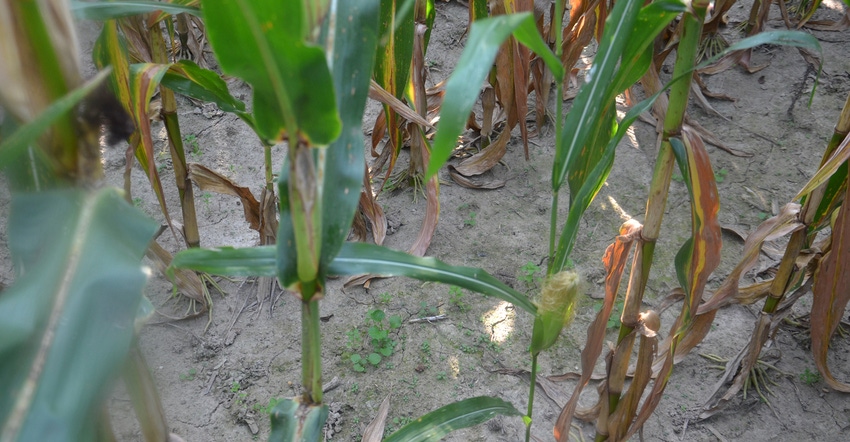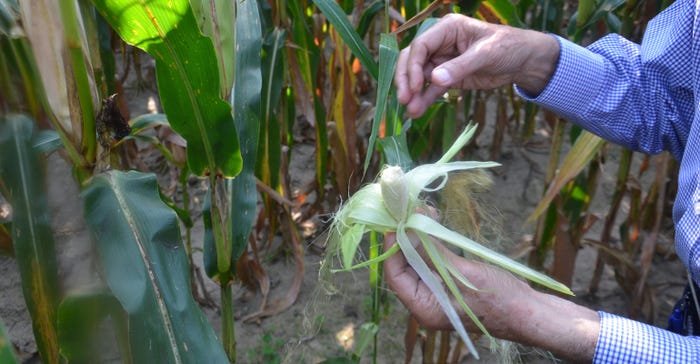
There is a reason why corn yield estimate formulas specify that you count number of ears per 1/1,000 acre, and not just number of plants. You could have 32,000 plants per acre at harvest, and only 29,000 ears. It’s the number of ears — and more precisely, the number of average-sized ears or better — that contribute to yield.
Dave Nanda stumbled across an example that illustrates this point while scouting the Corn Watch ’20 field before harvest. Nanda is director of genetics for Seed Genetics Direct, sponsor of Corn Watch ’20.
“The plant in the picture [above] obviously came up late and struggled for one reason or another,” Nanda says. “The interesting thing is that even though it was a shorter, more spindly plant, it produced a small ear.
“That’s not surprising by itself. A corn plant’s one and only mission is to produce as many progeny as possible. It doesn’t know it’s a hybrid plant, and that the seed won’t be planted because it wouldn’t breed true. Nature always wants to reproduce itself, and corn plants are no different.”
Pull back husks
In this case, unlike the “little engine that could” in the children’s book, which finally pulled the big load up and over the hill, the plant produced an ear, but no kernels. Despite its best efforts, it failed in its mission to produce viable progeny so it could carry on.
“Perhaps conditions were stressful when the small ear pollinated,” Nanda says. “It did produce silks. More likely, all pollen was already gone from other plants, and it didn’t produce enough, if any, pollen on its own to pollinate kernels. The result was an ear with no kernels at all.”

NO KERNELS: Here is the ear from the skinny, struggling plant. It’s a complete ear, but there are no kernels — just blanks on the short cob.

So, while this is another example of how miraculously each corn plant tries to reproduce, it’s not an example of a plant that will contribute to yield. In fact, Nanda contends that this corn plant is worse than a weed.
“You can take weeds out with herbicides earlier in the season,” he says. “But you can’t take corn plants that are too far behind or too spindly out of the corn stand.
“The problem is that this small plant competed with its neighbors for inputs, including water and nutrients, during the season, yet contributed nothing to yield. If it had not been there, the plant on either side may have compensated and produced more kernels, or bigger kernels. Either way, overall yield would have benefited.”
That’s one reason why Nanda believes in doing everything possible to ensure uniform emergence in the spring. Corn plants that emerge even a couple to a few days late run the risk of being far enough behind that they add little or nothing to final yield, while still consuming inputs during the season.
About the Author(s)
You May Also Like




